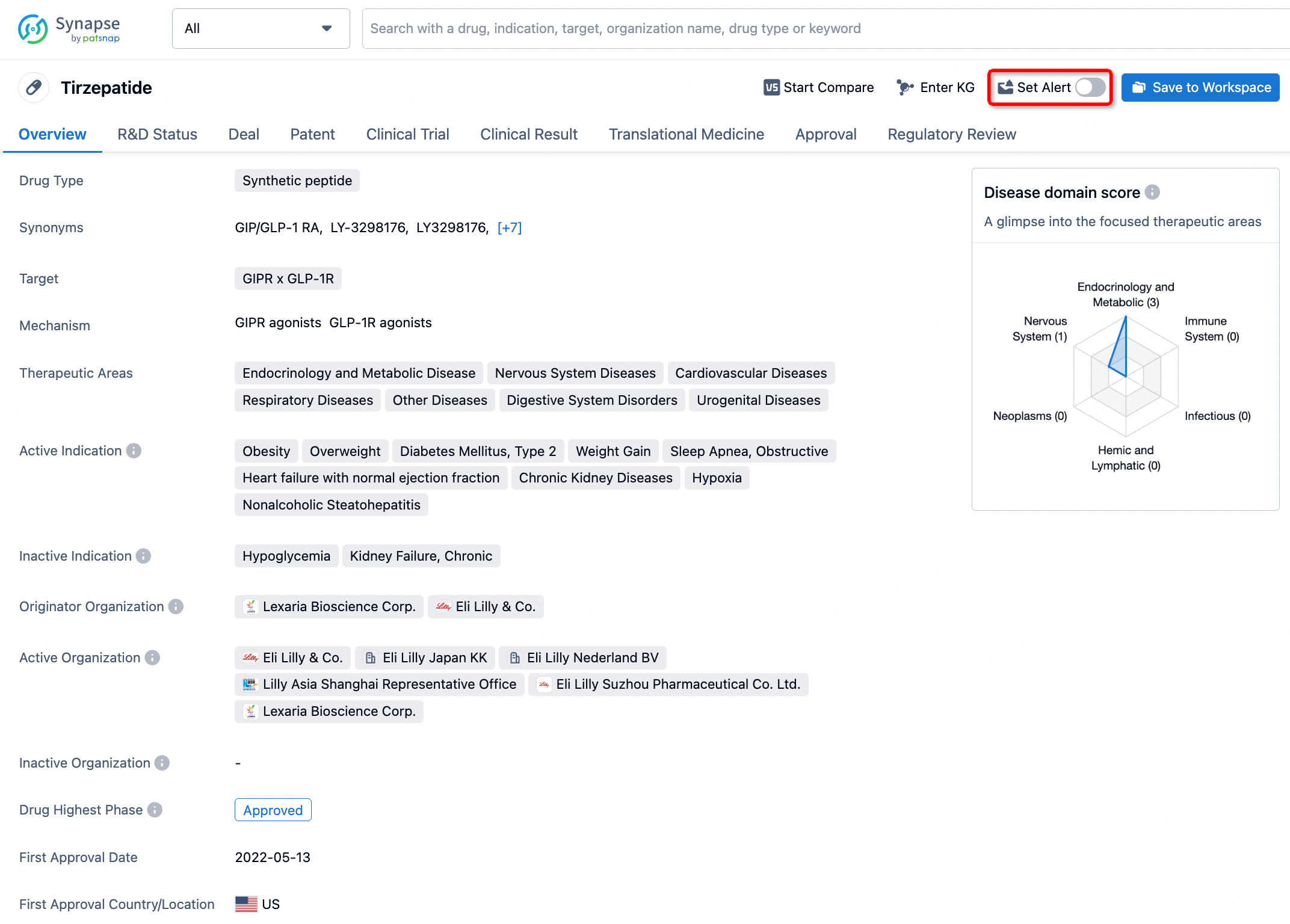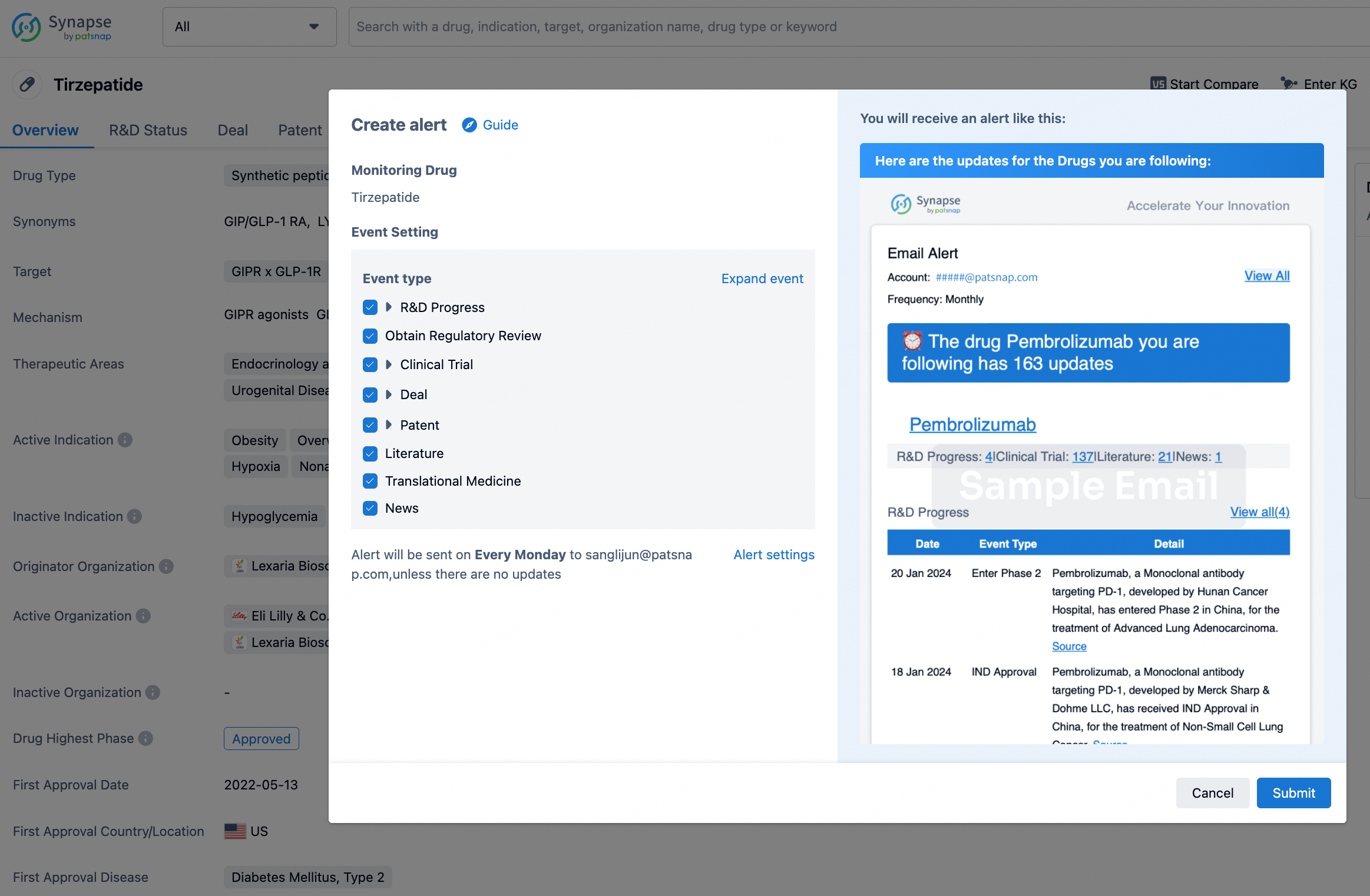Request Demo
What is Parsaclisib used for?
28 June 2024
Parsaclisib is an investigational drug currently under development for its potential use in the treatment of various hematologic malignancies. Parsaclisib targets PI3Kδ, a specific isoform of the phosphoinositide 3-kinase family. This class of enzymes plays a crucial role in cellular functions, including growth, proliferation, differentiation, and survival. The drug was initially developed by Incyte Corporation, a pharmaceutical company renowned for its focus on oncology and inflammation. As a PI3Kδ inhibitor, Parsaclisib stands out due to its high specificity and potency in inhibiting the PI3Kδ pathway, which is often dysregulated in cancer cells.
The research and development of Parsaclisib have gone through several phases of clinical trials. The drug has shown promising efficacy in early-phase studies, leading to its progression into later stages of clinical testing. Currently, Parsaclisib is undergoing Phase 2 and Phase 3 clinical trials to evaluate its safety and efficacy across different patient populations. The investigational studies primarily target indications such as chronic lymphocytic leukemia (CLL), follicular lymphoma (FL), and other forms of non-Hodgkin lymphoma (NHL). These trials are being conducted at various research institutions and clinical centers worldwide, providing a comprehensive evaluation of Parsaclisib's therapeutic potential.
Parsaclisib's mechanism of action revolves around its inhibition of the PI3Kδ enzyme. PI3Kδ is predominantly expressed in leukocytes, making it a viable target for hematologic malignancies. By inhibiting this enzyme, Parsaclisib disrupts the PI3K/AKT/mTOR signaling pathway, which is critical for cancer cell survival and proliferation. Dysregulation of this pathway is a common feature in many types of cancer, particularly those affecting the lymphoid lineage.
Upon administration, Parsaclisib binds to the ATP-binding site of the PI3Kδ enzyme. This binding inhibits its kinase activity, leading to a cascade of downstream effects that culminate in cell cycle arrest and apoptosis (programmed cell death). Additionally, Parsaclisib has been shown to reduce the production of cytokines and chemokines that promote the tumor microenvironment, thereby curbing the growth and spread of malignant cells. This dual action of direct inhibition of cancer cell proliferation and modulation of the tumor microenvironment underscores the therapeutic potential of Parsaclisib.
The primary indications for Parsaclisib include chronic lymphocytic leukemia (CLL), follicular lymphoma (FL), and mantle cell lymphoma (MCL). These conditions represent different subtypes of non-Hodgkin lymphoma, a diverse group of blood cancers originating from lymphocytes.
Chronic lymphocytic leukemia (CLL) is characterized by the accumulation of abnormal B lymphocytes in the blood, bone marrow, and lymphoid tissues. The disease often progresses slowly but can lead to severe symptoms such as anemia, fatigue, and increased susceptibility to infections. In clinical trials, Parsaclisib has demonstrated significant activity in reducing the burden of CLL, with manageable side effects.
Follicular lymphoma (FL) is the second most common type of non-Hodgkin lymphoma. It usually presents as a slow-growing tumor but can transform into a more aggressive form over time. The current treatment landscape for FL includes chemotherapy, immunotherapy, and targeted agents. Parsaclisib offers a novel approach by specifically targeting the PI3Kδ pathway, showing promising results in patients who have relapsed or become refractory to conventional therapies.
Mantle cell lymphoma (MCL) is a rare and aggressive form of non-Hodgkin lymphoma with poor prognosis. Patients often experience rapid disease progression and limited response to standard treatments. Early clinical data suggest that Parsaclisib can induce meaningful responses in MCL patients, providing a potential new treatment avenue for this challenging condition.
In conclusion, Parsaclisib represents a promising addition to the arsenal of targeted therapies for hematologic malignancies. Its specific inhibition of the PI3Kδ pathway offers a novel mechanism of action that can potentially improve outcomes for patients with CLL, FL, and MCL. As ongoing clinical trials continue to evaluate its efficacy and safety, Parsaclisib holds the potential to become a valuable therapeutic option in the fight against blood cancers.
The research and development of Parsaclisib have gone through several phases of clinical trials. The drug has shown promising efficacy in early-phase studies, leading to its progression into later stages of clinical testing. Currently, Parsaclisib is undergoing Phase 2 and Phase 3 clinical trials to evaluate its safety and efficacy across different patient populations. The investigational studies primarily target indications such as chronic lymphocytic leukemia (CLL), follicular lymphoma (FL), and other forms of non-Hodgkin lymphoma (NHL). These trials are being conducted at various research institutions and clinical centers worldwide, providing a comprehensive evaluation of Parsaclisib's therapeutic potential.
Parsaclisib's mechanism of action revolves around its inhibition of the PI3Kδ enzyme. PI3Kδ is predominantly expressed in leukocytes, making it a viable target for hematologic malignancies. By inhibiting this enzyme, Parsaclisib disrupts the PI3K/AKT/mTOR signaling pathway, which is critical for cancer cell survival and proliferation. Dysregulation of this pathway is a common feature in many types of cancer, particularly those affecting the lymphoid lineage.
Upon administration, Parsaclisib binds to the ATP-binding site of the PI3Kδ enzyme. This binding inhibits its kinase activity, leading to a cascade of downstream effects that culminate in cell cycle arrest and apoptosis (programmed cell death). Additionally, Parsaclisib has been shown to reduce the production of cytokines and chemokines that promote the tumor microenvironment, thereby curbing the growth and spread of malignant cells. This dual action of direct inhibition of cancer cell proliferation and modulation of the tumor microenvironment underscores the therapeutic potential of Parsaclisib.
The primary indications for Parsaclisib include chronic lymphocytic leukemia (CLL), follicular lymphoma (FL), and mantle cell lymphoma (MCL). These conditions represent different subtypes of non-Hodgkin lymphoma, a diverse group of blood cancers originating from lymphocytes.
Chronic lymphocytic leukemia (CLL) is characterized by the accumulation of abnormal B lymphocytes in the blood, bone marrow, and lymphoid tissues. The disease often progresses slowly but can lead to severe symptoms such as anemia, fatigue, and increased susceptibility to infections. In clinical trials, Parsaclisib has demonstrated significant activity in reducing the burden of CLL, with manageable side effects.
Follicular lymphoma (FL) is the second most common type of non-Hodgkin lymphoma. It usually presents as a slow-growing tumor but can transform into a more aggressive form over time. The current treatment landscape for FL includes chemotherapy, immunotherapy, and targeted agents. Parsaclisib offers a novel approach by specifically targeting the PI3Kδ pathway, showing promising results in patients who have relapsed or become refractory to conventional therapies.
Mantle cell lymphoma (MCL) is a rare and aggressive form of non-Hodgkin lymphoma with poor prognosis. Patients often experience rapid disease progression and limited response to standard treatments. Early clinical data suggest that Parsaclisib can induce meaningful responses in MCL patients, providing a potential new treatment avenue for this challenging condition.
In conclusion, Parsaclisib represents a promising addition to the arsenal of targeted therapies for hematologic malignancies. Its specific inhibition of the PI3Kδ pathway offers a novel mechanism of action that can potentially improve outcomes for patients with CLL, FL, and MCL. As ongoing clinical trials continue to evaluate its efficacy and safety, Parsaclisib holds the potential to become a valuable therapeutic option in the fight against blood cancers.
How to obtain the latest development progress of all drugs?
In the Synapse database, you can stay updated on the latest research and development advances of all drugs. This service is accessible anytime and anywhere, with updates available daily or weekly. Use the "Set Alert" function to stay informed. Click on the image below to embark on a brand new journey of drug discovery!
AI Agents Built for Biopharma Breakthroughs
Accelerate discovery. Empower decisions. Transform outcomes.
Get started for free today!
Accelerate Strategic R&D decision making with Synapse, PatSnap’s AI-powered Connected Innovation Intelligence Platform Built for Life Sciences Professionals.
Start your data trial now!
Synapse data is also accessible to external entities via APIs or data packages. Empower better decisions with the latest in pharmaceutical intelligence.


